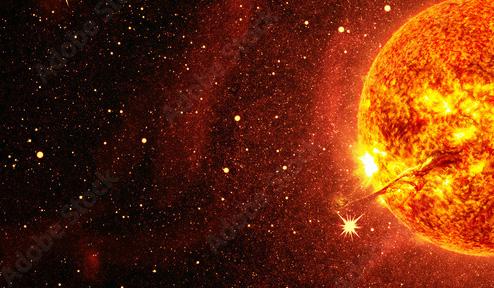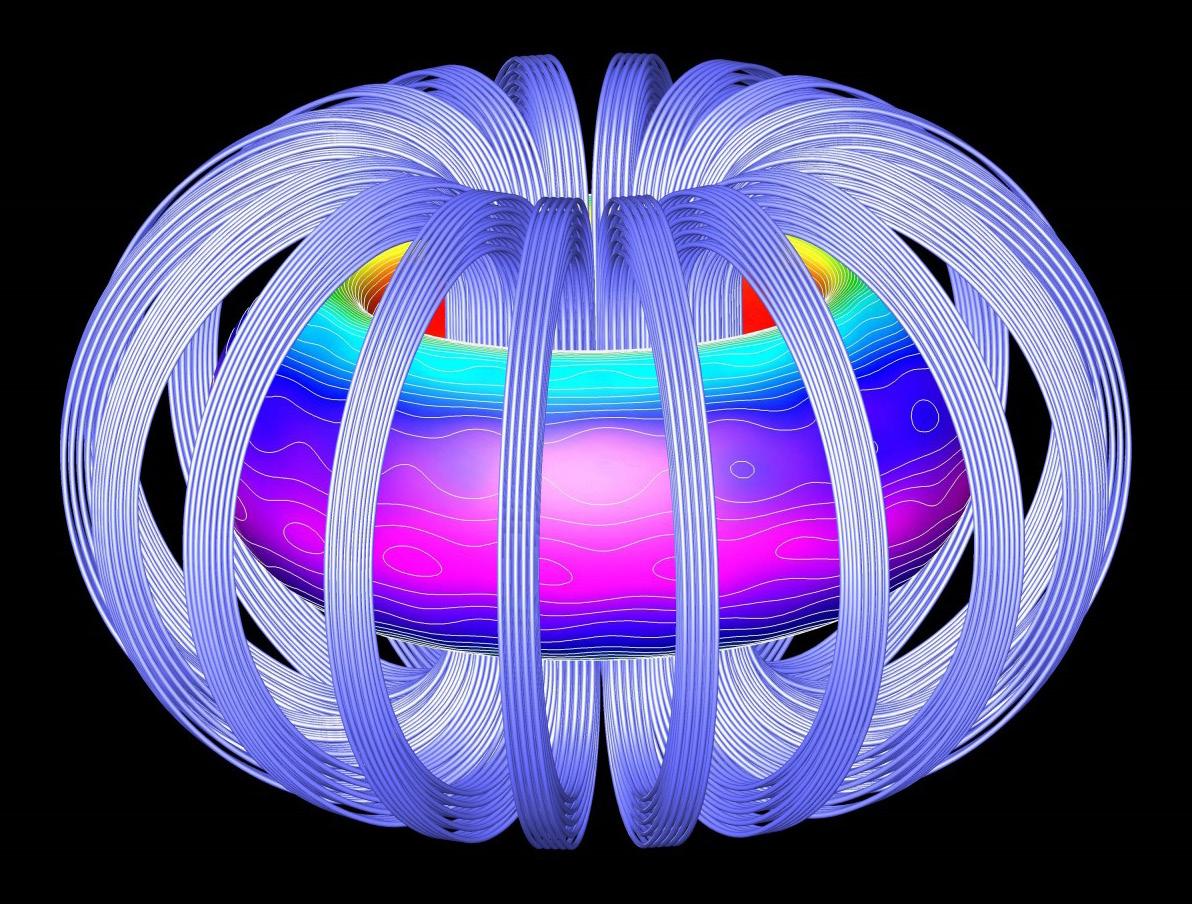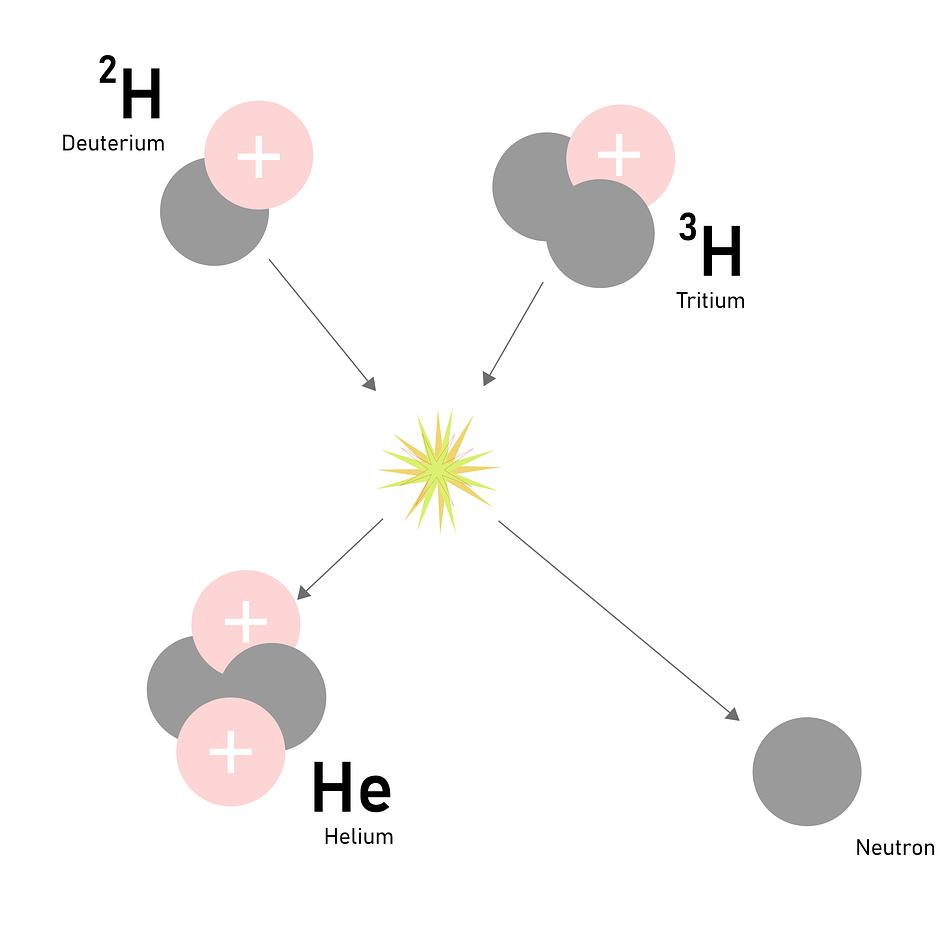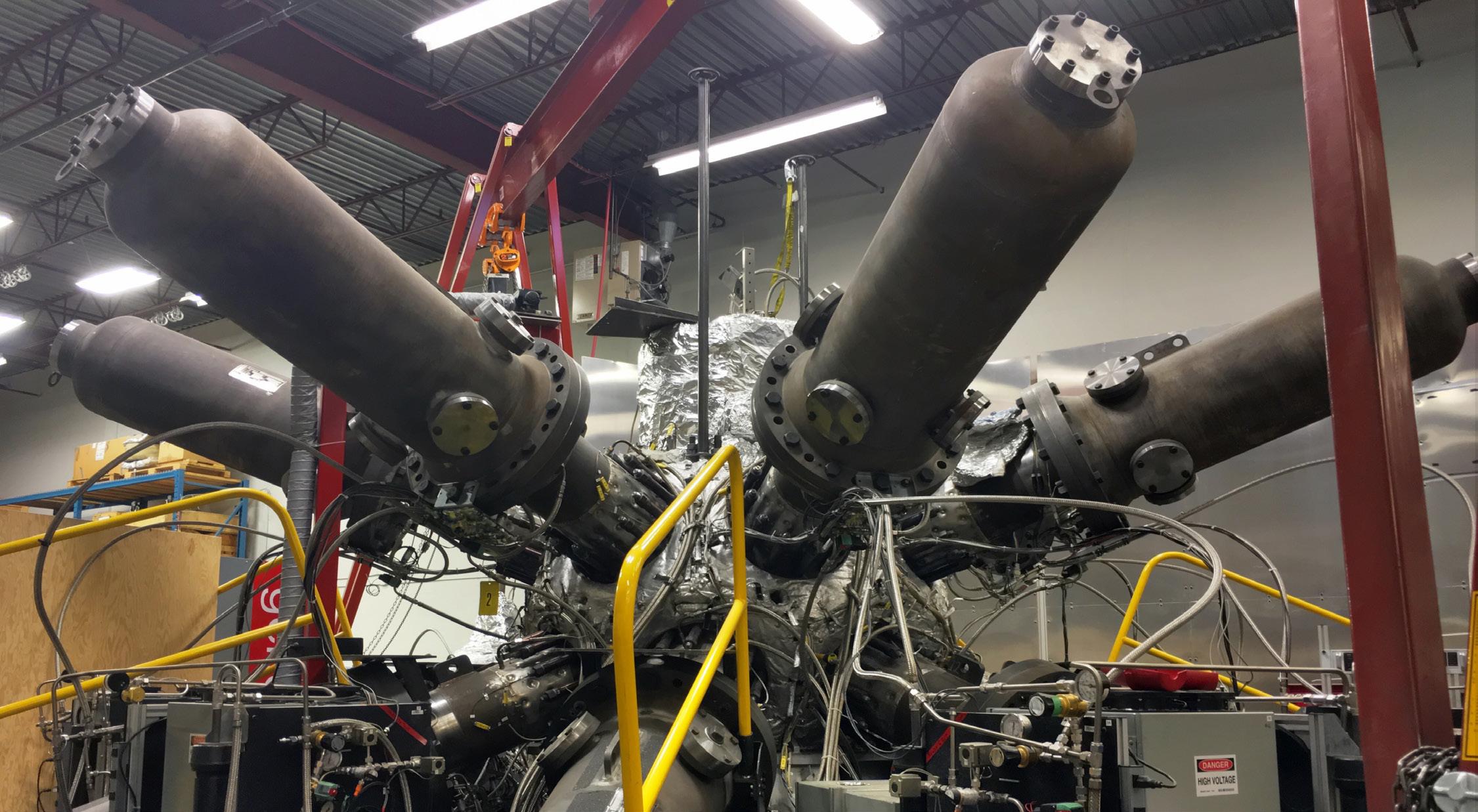
8 minute read
Forging Stars: The Technology Behind Fusion Power Marley Ottman
from ORIGINS
FORGING STARS: THE TECHNOLOGY BEHIND FUSION POWER
BY MARLEY OTTMAN
Advertisement
If you were to stop and look directly at the sun on a bright day, you would probably experience two sensations: a painful stinging in your eyes and a feeling of awe at the sun’s immense power. So it is natural that the question eventually arose, “Why not try making power the same way the sun does?” For more than 60 years, scientists have been trying to do just that. The process is called nuclear fusion, wherein several small atoms are forcibly fused together, releasing energy and some reactant particles.1 This is in contrast to the nuclear fission process that supplies the energy generated by today’s nuclear power plants by splitting heavy atoms. Fusing these atoms is not the hard part—in fact, 1958 marked the first experiment that successfully achieved controlled thermonuclear fusion.2 The difficulty lies in fusing these atoms in a way that releases more energy than is put in, especially doing it for long enough to generate real recoverable power. But, in the past two decades, interest has revived in sustainable nuclear fusion and private money has started to flow into dozens of fusion power startups. As this momentum towards a future powered by nuclear fusion builds, it is crucial to understand the scientific concepts and technologies currently being utilized in fusion labs across the world. In order to fully understand fusion power research, we must first understand the issue arguably most central to the whole field: confining the plasma fuel. Plasma wants nothing more than to disperse its heat and destroy its immediate surroundings. This means that keeping it confined at high enough densities for stable reactions is a real challenge. The tremendous gravity of stars keeps the plasma contained within them trapped and pressurized. But on Earth, we must get creative. In the 1950s, Soviet physicists Igor Tamm and Andrei Sakharov drafted a system that utilized plasma’s material nature of being able to be shaped by magnetic fields. By forming super magnets in rings and arranging those rings into a hollow toroidal shape, the plasma is confined in a continuous loop and the tokamak design concept was born.3 Almost all of the modern approaches to fusion power rely on super magnets for confinement. Their role is so important that a key metric of gauging the cost and efficiency of proposed systems is the beta parameter (β), a ratio of the plasma’s pressure to the pressure created by the confining magnetic field. Keeping this ratio high, by keeping the amount of magnetic force necessary low, is key to ideal reactor design.4 The potential first generation of fusion reactors are being pioneered by companies like TAE Technologies. At the heart of their design is the concept of colliding beam fusion (CBF). As the name implies, CBF attempts to produce nuclear fusion by colliding two streams of high energy particles into each other. As these beams unite in a central chamber, they achieve energy levels high enough to form a plasma. Powerful magnets coax this plasma into the shape of a rotating hollow cylinder, similar in shape to a tin can without its lids. This containment formation is called a field-reversed configuration (FRC) and is another keystone in TAE’s design. The FRC’s potential lies within its magnetic geometry; unlike tokamaks, FRCs do not have a toroidal magnetic field. Instead, FRCs rely solely on poloidal magnetic fields to contain the plasma. This keeps engineering and maintenance simpler, as well as giving it a very high beta.5,6 To keep the fusion reaction stable and sustainable, particle accelerators are placed around this central chamber and inject high energy fuel particles into the plasma to

sustain the reaction. These fuel particles are boron-11 and hydrogen. When they fuse, they produce three alpha particles, and more importantly, little to no neutrons.* This fuel strategy is called aneutronic fusion. Multiple startups are trying it due to its higher theoretical output efficiency. Unlike the deuterium and tritium (D-T) reaction frequently used in fusion experiments, aneutronic reactions do not produce nearly as many neutrons that scatter and take precious reactant energy with them.7 There are a number of aneutronic fuel combinations that look promising, but there is a reason the biggest fusion projects in history have steered clear. This improved recoverable output energy comes at a price: higher input energy.8 The conditions to provoke fusion in aneutronic fuel mixtures are much more extreme than those for D-T, requiring more heat and density. This translates to more complex engineering, and ultimately, higher cost. However, that does not stop the risk-embracing start ups from trying. Helion Energy is another such company trying to use an aneutronic reaction to produce net-positive fusion. Their approach begins with two preheated pockets of plasma composed
Figure 1: Image of a toroidal shape as refrenced
of fuels helium-3 and deuterium. They then collide and compress the plasma with powerful magnetic fields until sufficient fusion occurs. Once all the fuel has been expended, the plasma is allowed to decompress, giving back the energy needed, and the whole process restarts. This method combines the properties of both inertial and magnetic confinement and results in a cyclic process, almost like a


Helion is not the only startup to forgo the conventional super magnets and tokamak approach; the innovative startup General Fusion is attempting to create a sort of cyclic fusion engine. The design uses the tried and tested D-T reaction for fuel, but that is its only similarity to other concepts. At the core of their reactor is a spherical tokamak of fuel plasma, this geometry being essentially a sphere but with a small hole running through its poles.8 They then want to surround this core with a blanket of molten lead by spinning it like a centrifuge. In this way, a cavity for the plasma can form in the center. Placed outside of this liquid metal shell, steam rams are cyclically and synchronistically ‘hammering’ inward, tamping the metal inward and compressing the plasma to a point where fusion takes place. The resultant heat is absorbed by the liquid metal and cycled through a heat exchanger that creates steam, which then turns a turbine and generates power. This liquid lead shell is perhaps the most fascinating design quirk as it serves multiple functions. It is simultaneously acting as a means of containment and compression of plasma while also acting as a radiation shield and the heat transfer fluid. General Fusion has even proposed adding lithium to the molten lead as the fleeing high energy neutrons from the reaction could be absorbed by the lithium atoms and transmute it into tritium that could be recycled for fuel.9 For decades, excitement from advances in fusion research have caused some to make the public somewhat idealistic assurances on when exactly nuclear fusion power will reach maturity. There is a joke in the scientific community that fusion power is perpetually “less than 20 years away,” but for the first time in decades, the 20 year figure may prove to be correct. Although it is clear that whenever fusion power may become a reality, it will not be a cureall to the world’s energy problems. It is also clear that it will be a major milestone in human history. That is referring only to the technology’s ability to generate power; it is impossible to tell what number of ancillary technological advancements will be made in this race towards the ultimate source of renewable energy.
*Due to the fact that nuclear fusion going on inside of a reactor is made up of an incredibly high number of individual reactions, it is impossible to say that none of these will result in neutrons. Aneutronic fusion is typically classified as having <5% of its resultant energy due to neutrons.10
REFERENCES
1. Shultis, J. K., & Faw, R. E. (2002). Fundamentals of nuclear science and engineering. New York: Marcel Dekker. 2. Philips, J. A. (1983). Magnetic Fusion. Los Alamos Science, 64-67. 3. Arnoux, R. (1970, October 27). Which was the first tokamak-or was it tokomag? Retrieved from https://www.iter. org/newsline/55/1194 4. Harms, A. A., Schoepf, K. F., Miley, G. H., & Kingdon, D.
R. (2010). Principles of fusion energy: An introduction to fusion energy for students of science and engineering.
Singapore: World Scientific. 5. Steinhauer, L. C., Roche, T., & Steinhauer, J. D. (2020).
Figure 2: Example of D-T fusion reaction



Figure 3: General Fusion Prototype
Anatomy of a field-reversed configuration. Physics of
Plasmas, 27(11), 112508. doi:10.1063/5.0022663 6. Ono, Y. et al. (1999). New relaxation of merging spheromaks to a field reversed configuration. Nuclear Fusion, 39(11Y), 2001-2008. doi:10.1088/0029-5515/39/11y/346 7. Harms, A. A., Schoepf, K. F., Miley, G. H., & Kingdon, D.
R. (2010). Principles of fusion energy: An introduction to fusion energy for students of science and engineering.
Singapore: World Scientific. 8. Laberge, M. (2018). Magnetized Target Fusion with a
Spherical Tokamak. Journal of Fusion Energy, 38(1), 199203. doi:10.1007/s10894-018-0180-3 9. Dai, Z. (2017). Thorium molten salt reactor nuclear energy system (TMSR). Molten Salt Reactors and Thorium Energy, 531-540. doi:10.1016/b978-0-08-101126-3.00017-8 10. Roth, P. J. (1989). Space Applications of Fusion Energy:
Part II - Factors Affecting Confinement Concept. Fusion Technology, 15(2P2B), 1107-1107. doi:10.13182/ fst89-a39840
IMAGE REFERENCES
11. Figure 1: Pxhere. https://pxhere.com/en/photo/1194583. 12. Figure 2: Pixabay. https://pixabay.com/images/search/hydrogen/. 13. Figure 3: General Fusion Plasma Injector. https://commons.wikimedia.org/wiki/File:General_Fusion_plasma_ injector_(32476489803).jpg.










